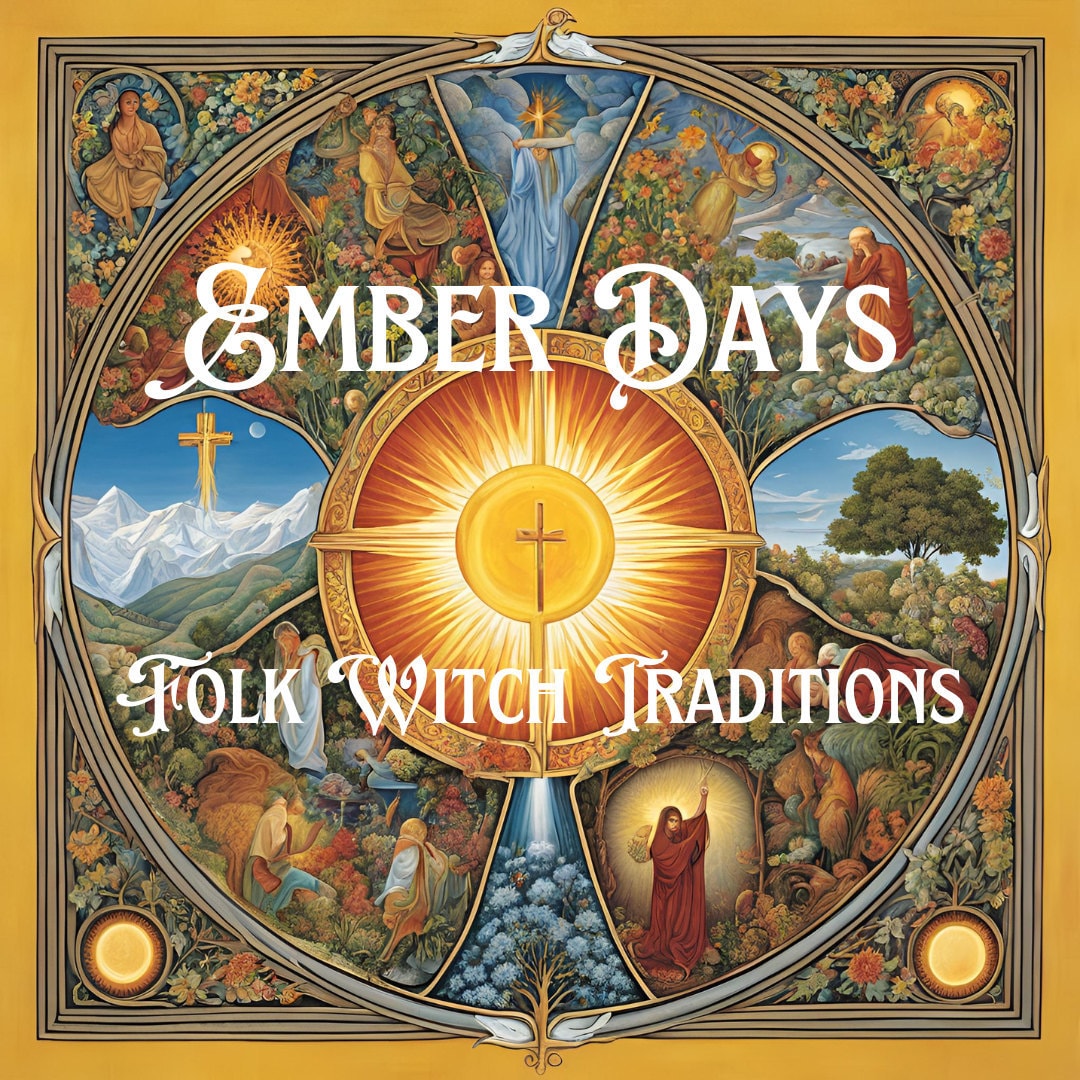The Ember Days are specific times in the Folk-Catholic liturgical calendar, traditionally observed by fasting, prayer, and reflection. They occur four times a year, marking the changing of the seasons, and have deep roots in agricultural practices and folk customs. The Ember Days are closely linked to nature, the cycles of the earth, and the well-being of the community, which is why they have also been absorbed into folk magic traditions.
Origins and Background of Ember Days
The Ember Days (from the Latin "Quatuor Tempora," meaning "four times") are observed on the Wednesday, Friday, and Saturday following:
The First Sunday of Lent in March (spring)
Pentecost in June (summer)
The Feast of the Holy Cross in September (autumn)
The Feast of St. Lucy in December (winter)
These days were traditionally dedicated to prayer, fasting, and giving thanks for the harvest, as well as ordination of clergy.
The Ember Days also became embedded in folk traditions as times of heightened spiritual activity. Because of their alignment with the seasonal changes, these periods were seen as moments when the veil between the physical and spiritual worlds was thinner. This made the Ember Days particularly potent for divination, protection, and blessing rituals, especially in rural communities where the success of crops and the changing seasons were of utmost importance.
Key Elements of Ember Days Folk Magic
Each set of Ember Days corresponds to a seasonal shift, making them ideal for reflection on the past season and setting intentions for the coming one.
Folk practices might involve:
Spring (Lent): Planting new seeds, both literally and metaphorically. Magic performed at this time often focuses on growth, new beginnings, and purification.
Summer (Pentecost): Nourishing and sustaining efforts. Folk magic during the summer Ember Days may focus on strength, protection, and the flourishing of intentions or projects.
Autumn (Holy Cross): Harvest and gratitude. This is a time for reaping the benefits of one’s efforts and performing rituals related to thanksgiving and ensuring continued prosperity.
Winter (St. Lucy): Rest and reflection. Winter Ember Days often involve introspection, protection from the harshness of the season, and preparation for the coming year.
Fasting and Purification: Traditionally, fasting during the Ember Days was seen as a form of spiritual discipline, but in folk magic, it is also viewed as a way to cleanse the body and soul, making one more receptive to spiritual guidance and power. In some traditions, fasting is accompanied by rituals of purification, such as cleansing baths, smudging with herbs, or using holy water.
Divination: The Ember Days are considered particularly powerful for divination. Folk traditions often involve seeking guidance or predicting future events during these periods.
Scrying: Using water, mirrors, or flames to gain insight.
Dreamwork: Paying special attention to dreams during the Ember Days, as they were believed to carry significant messages.
Reading Natural Omens: Observing the behavior of animals, the weather, or other natural phenomena as signs.
Blessing the Land and Crops: Since the Ember Days align with the agricultural calendar, they are often used to perform blessings on the land, livestock, and crops.
Sprinkling holy water on fields or gardens: Asking for divine protection and a bountiful harvest.
Burying blessed objects: Such as medals of saints or written prayers, in the soil to safeguard the land.
Lighting candles at the four corners of a property: Symbolizing the protection of the space from all directions.
Protection Magic: As transitional times, the Ember Days were also seen as vulnerable periods when protective magic was necessary.
Folk traditions might include:
- Creating protective charms: Using herbs, stones, or prayers to ward off evil or misfortune.
- Blessing the home: Smudging with protective herbs like sage or rosemary, or sprinkling salt at doorways and windows to keep out negative energies.
- Community Rituals: In rural communities, Ember Days were often times of communal gathering, where people would come together to pray for a good harvest, heal the sick, or protect against natural disasters. In folk magic, this communal aspect is retained through group rituals, shared meals after fasting, and collective offerings to the divine.
The Ember Days provide a unique opportunity to blend traditional Christian practices with folk magic, focusing on the rhythms of nature and the cycles of the seasons. Through fasting, reflection, and rituals of blessing and protection, practitioners can attune themselves to the spiritual energies of the earth and ensure their well-being through the changing times. Whether observed in a communal setting or through personal practice, the Ember Days offer a powerful way to connect with both the divine and the natural world.

